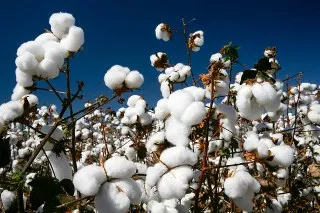Sea island cotton
Cotton with particularly long silky fibers is called sea island cotton. It has been the foundation of Spori's rare and precious high-quality yarns for over 150 years, recognized worldwide as the finest cotton. Sea Island is a historic market square. It was actively marketed from the 1790s to the 1920s. It grows on islands off the coast of South Carolina, Georgia, and Florida. It was once an important market category. In European markets, it faced little competition from its inception until the trade was interrupted by the US Civil War, with similar characteristics to cotton.
Cotton was grown along the coast of South Carolina and Georgia, especially in the Sea Islands in the late 18th century. Sea Island cotton commands the highest price of all cotton because of its long staple and silky texture; It is used for the finest cotton counts and is often mixed with silk.
Sea Island cotton origin
The origin of Sea Island cotton is a matter of considerable debate. However, developing varieties that would be productive in the Sea Islands and developing a product different from other types of cotton is necessary to develop a market class. It would seem that at least some producers and consumers would agree that Sea Island cotton was a useful category.
A challenge in explaining the development of long-fiber cotton in the Sea Islands is that Sea Islands cotton came from the West Indies, a region where all cultivated cotton was short fiber according to today's standards and required a long growing season. A distinct cotton could not be developed in the Sea Islands, at least not by hybridization or selection, because frost killed the plants before they had a chance to produce seeds.
Silky and high-value sea island cotton boasts extra-long fibers that make the variety particularly desirable. William Elliott first imported a subspecies of Gossypium barbadense to grow on Hilton Head Island's Myrtle Bank in 1790. The result was higher quality cotton than previously available on the American market.
Unusual weather conditions in 1785 and 1786 aided a G. barbadense productive development in the Sea Islands. According to historical records, planters in Georgia were trying to introduce G. barbadense, but the plants would die from frost before they could produce seed or fiber. However, the winter of 1785–1786 was particularly mild, so few plants succeeded in producing seed. The next generation of plants was able to produce seeds and fiber before winter.
Although planters tried to grow it in the uplands of Georgia, the quality was poor, and it was too expensive to process. The invention of the cotton gin in the late 18th century completely changed the production of cotton as a commodity crop. This made the processing of short-staple cotton profitable. This cotton, known as upland cotton, can be grown successfully in interior uplands. Short-staple cotton became the staple crop of the developing Deep South, and King cotton was the foundation of the South's wealth in earlier years. In the early 21st century this cotton represented about 95% of US production.
Sea island cotton characteristics
Harvesting and cultivation
These valuable fibers are cultivated exclusively in the British West Indies Islands in the Caribbean, where the climatic conditions are ideal for their growth. Committed to quality, Spoerry 1866, in collaboration with local farmers, maintains its own plantations and fiber-processing plants in the Caribbean to maintain direct control over cotton quality.
Sea Island cotton is picked by hand and processed using a gentle, traditional method that is no longer mastered by many people in our industrial society today. We believe this is a positive contribution to ecological balance and is the only way in which the length of the fibers can be preserved with their fine, homogeneous structure. According to the picking philosophy, select the cotton manually, in the traditional way, to be able to guarantee top quality. This effort results in a unique blend of fibers with outstanding strength, a natural silken sheen, and an incredible feel that cannot be found anywhere else.
Conclusion
Sea Island cotton distinguishes itself from other cotton species for its unique characteristics: significant staple length of the fiber, +37 mm, high strength, and a good percentage of uniformity (86%). In addition to length, the fiber is exceptionally fine, as evidenced by micronaires, between 2.8 - 2.9, together with remarkable brightness. According to all these results, sea island cotton is noticeably stronger, softer, and more luxurious.











0 Comments